The WOW scanner is one of the newest intraoral scanners (IOS) on the market. It has a striking design and is by far the smallest IOS available, even smaller than many intraoral cameras. The size of this scanner alone makes it quite an interesting product and in an idealistic world perhaps something all future IOS can aspire to? The question is what are the drawbacks of this scanner and how to does it compare to other scanners? Does smaller mean better?
Background
The WOW intraoral scanner was launched by Biotech Dental in 2019. This French company has focused on dental healthcare related manufacturing since its very start in 1987. Since then it has grown into an international conglomerate composed of multiple companies such as Denteo, Poly-Shape and clear-aligner manufacturer Smilers. They also closely cooperate with the French denture manufacturer Detifit.
Biotech Dental is also the largest implant company in France, with over 650 employees working for the group. They also own the largest network of dental labs in France, Labeldent and are looking at opening their subsidiary in the US by the end of 2020.
Considering that the company's focus has mostly been manufacturing, it seems to be the next logical step that they would follow the current trend and bring an IOS to the market. For those who remember the Condor IOS, you may be having flashbacks as the WOW IOS looks almost exactly the same. The Condor company was bought out by Biotech Dental and they have since greatly improved the IOS.
We have been trialing the WOW scanner extensively for over four months now, spending hundreds of hours learning about the scanner and testing its capabilities. Below are our findings and thoughts about the system and how it compares to the other scanners on the market.
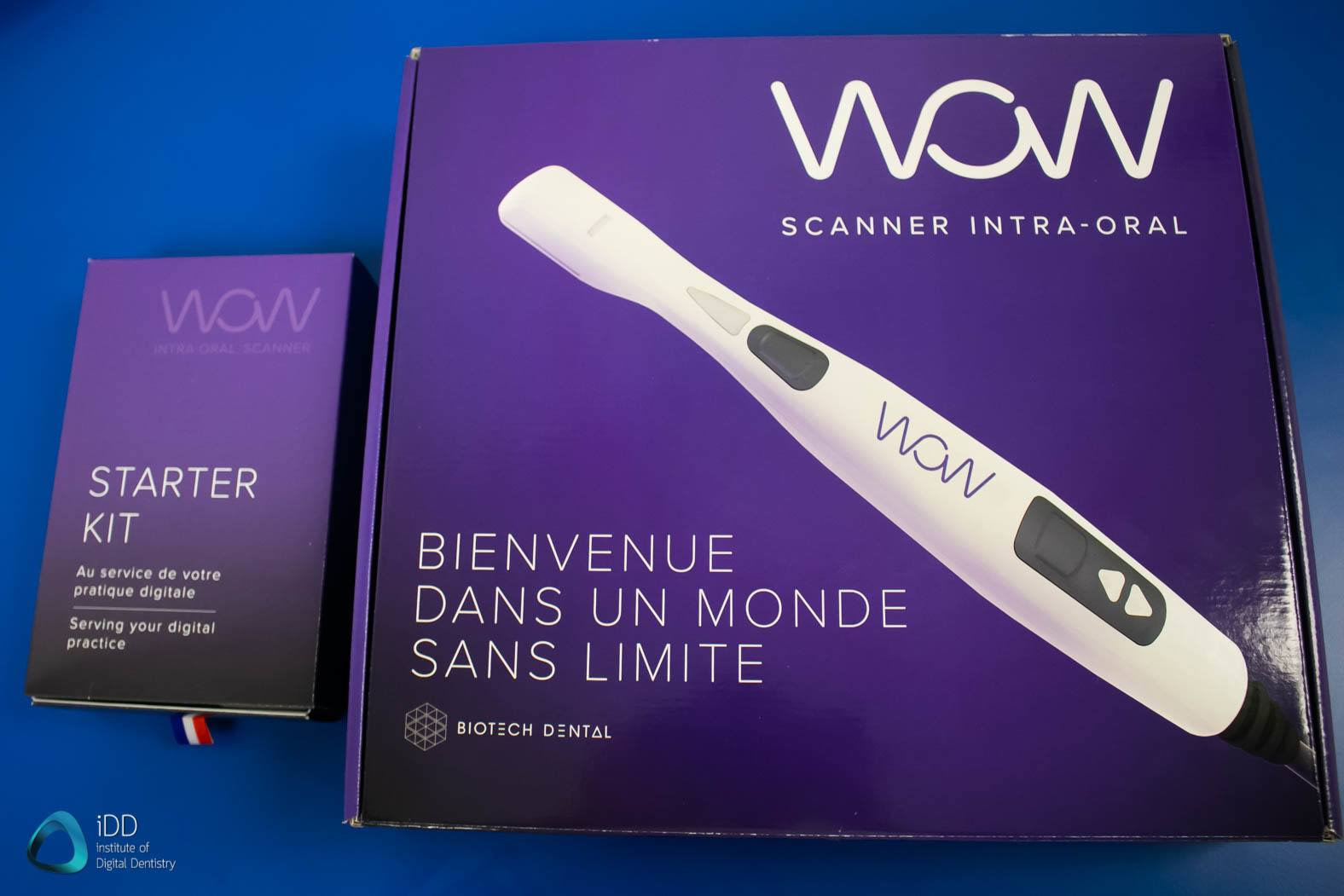
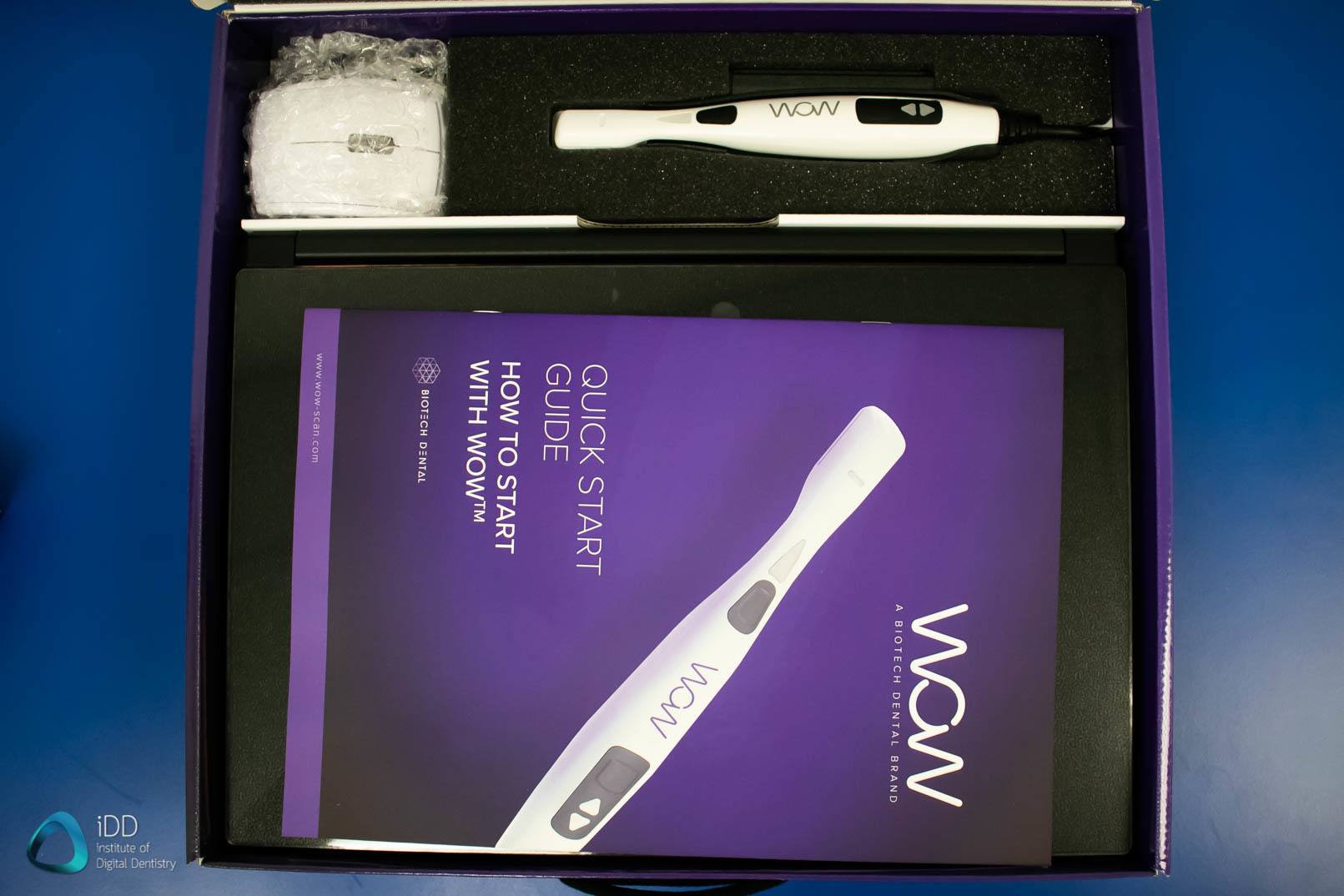
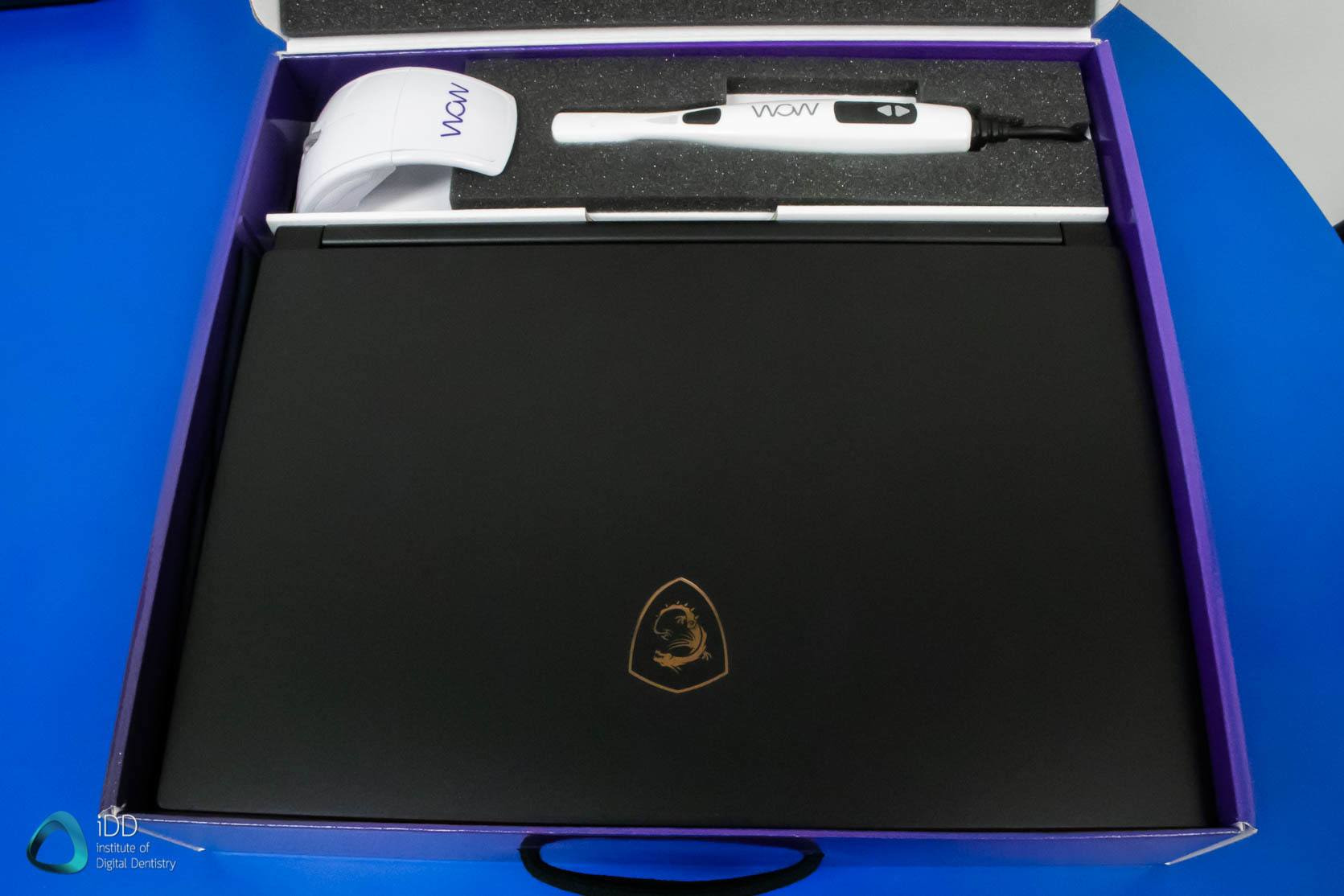
Unboxing of the WOW scanner. Note the included high performance laptop.
Disclaimer: This is an objective review of the scanner and we do not have any ties to the company. The team at iDD remain unwaveringly committed to providing you with objective and trustworthy information and therefore do not seek any sponsorship. Biotech Dental kindly loaned us a WOW scanner for testing purposes. Our team at iDD are constantly approached by scanner companies to review their scanners and it is always made clear that they will have no part in writing reviews or restricting any conclusions iDD makes in our thorough analysis and clinical use of these products.
With that said, below are our findings and in-depth discussion about the WOW scanner and how it compares to other intraoral scanners on the market. Enjoy the review.
Review Overview
Evaluation Ratings
Scanning Speed
Scanning Flow
Scanner Size
Ease of Use
Investment Cost
High Performance Laptop Included
Additional Features
Touch Screen
Not Applicable as it is a USB scanner
Wireless Scanner
Caries Detection
CAD Integration
Scan Only
Subscription Requirements
No yearly fees
Autoclavable Tips
A different type of intraoral scanner
The WOW scanner is a completely different product compared to all other IOS on the market today. Most IOS are essentially three-dimensional scanners, in that they project a light source (laser, structured light, etc.) onto the object to be scanned. This light source reflects off the object and the images of the dentogingival tissues is captured by imaging sensors. These images are then processed by the scanning software, which generates point clouds. These point clouds are then triangulated by the same software, creating a 3D surface model (mesh) which is then colour rendered by the software.
The WOW IOS feels more like an intraoral camera than a 3D scanner. This is true for both its shape and the hyper-realistic images it produces. It is essentially an intraoral video camera with which you can acquire a 3D model by video recording inside a patient's mouth. This is a key distinction to make as it explains many aspects of the scanner that we will discuss below, such as why the scanner is so small. Also the scanner has a completely different scanning strategy which is discussed later in the review.
WOW Starter Kit
Included in the box is a WOW starter kit which includes a number of interesting products - black gloves, black suction tips and black clip-on scanning guides. At first, the colour choice may seem like an aesthetic decision but the actual reason for this is that the WOW scanner does not 'see' the colour black while in operation. This means that while using black gloves and suction tip you can retract the soft tissues and have no problem with the scanner picking up artefacts. This is nice to see packaged into the box itself but whether a scanner is enough reason for a practice to change to black (and often more expensive) gloves and suction tips is up for debate.

Starter Kit included with the WOW scanner includes Scanning guides, black gloves and black suction tips
The clip-on scanning guides are an interesting feature of the WOW scanner that I have not seen anywhere else in the market. These plastic guides are clipped onto the scanning head and are used to rest against the teeth. This is to ensure the distance of the scanner camera and the tooth surface is always at the right focal length. In manufacturer's instructions, it is recommended to always use the guides, except when space doesn't allow.
This would be even more important for beginners who need training to learn how to scan. During our trial, we found that the focal depth is so specific that it is quite difficult to use the WOW scanner without the guides, especially considering normal deviations of the hand when scanning. This means if you are a little too close or slightly too far from the tooth surface, the scanner will not be able to pick up an image.
These scanning guides can be a nuisance in areas where there isn’t much space. In these instances, the guides will need to be removed. We found that lower second molar distal surfaces were particularly hard to scan with the guides in place.
Moreover, the company recommends you use black gloves as the scanner does not 'see' black colours and therefore enables you to retract tissues easily with your hands without it being captured. They include a few pairs of black gloves in the box to get you started.
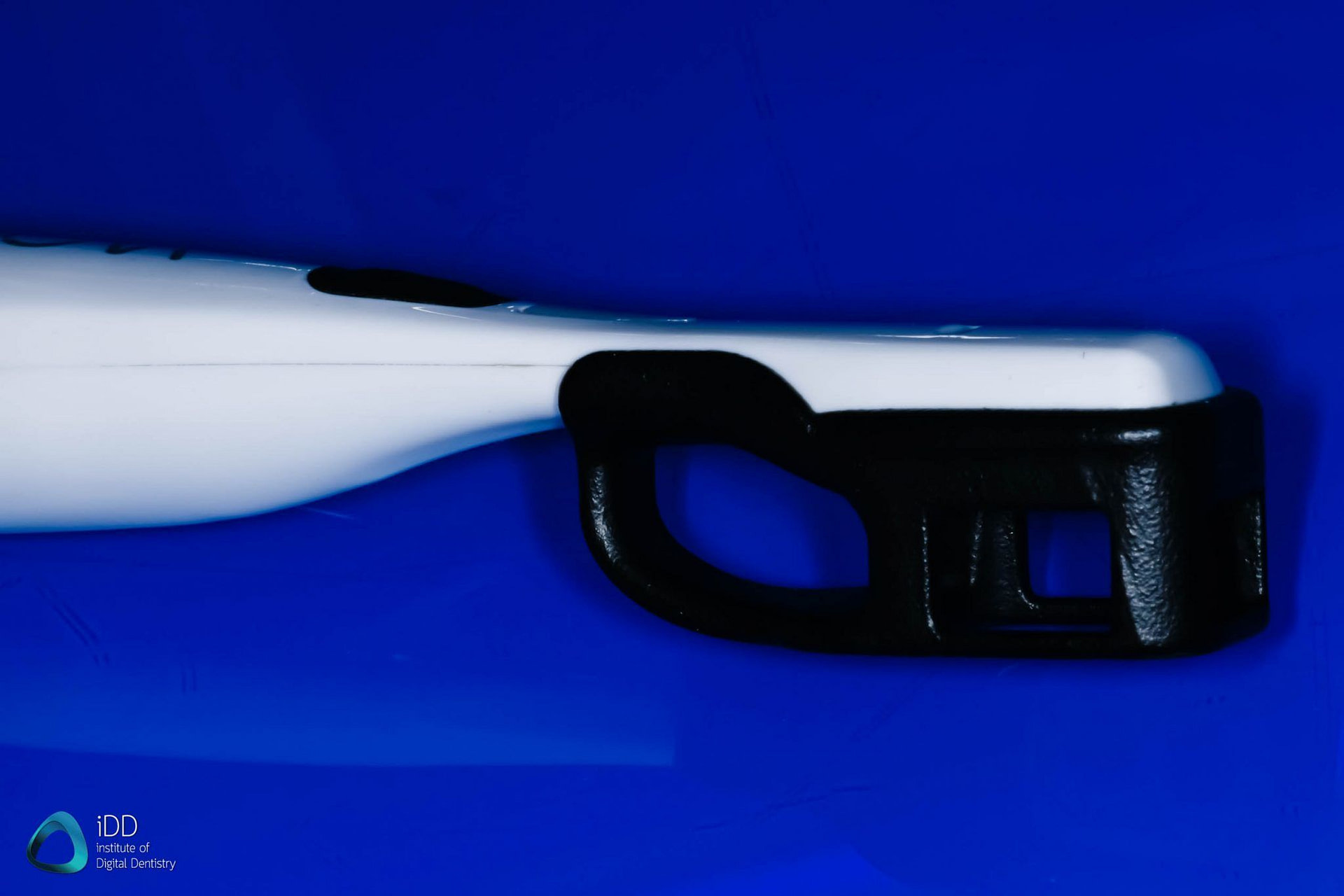
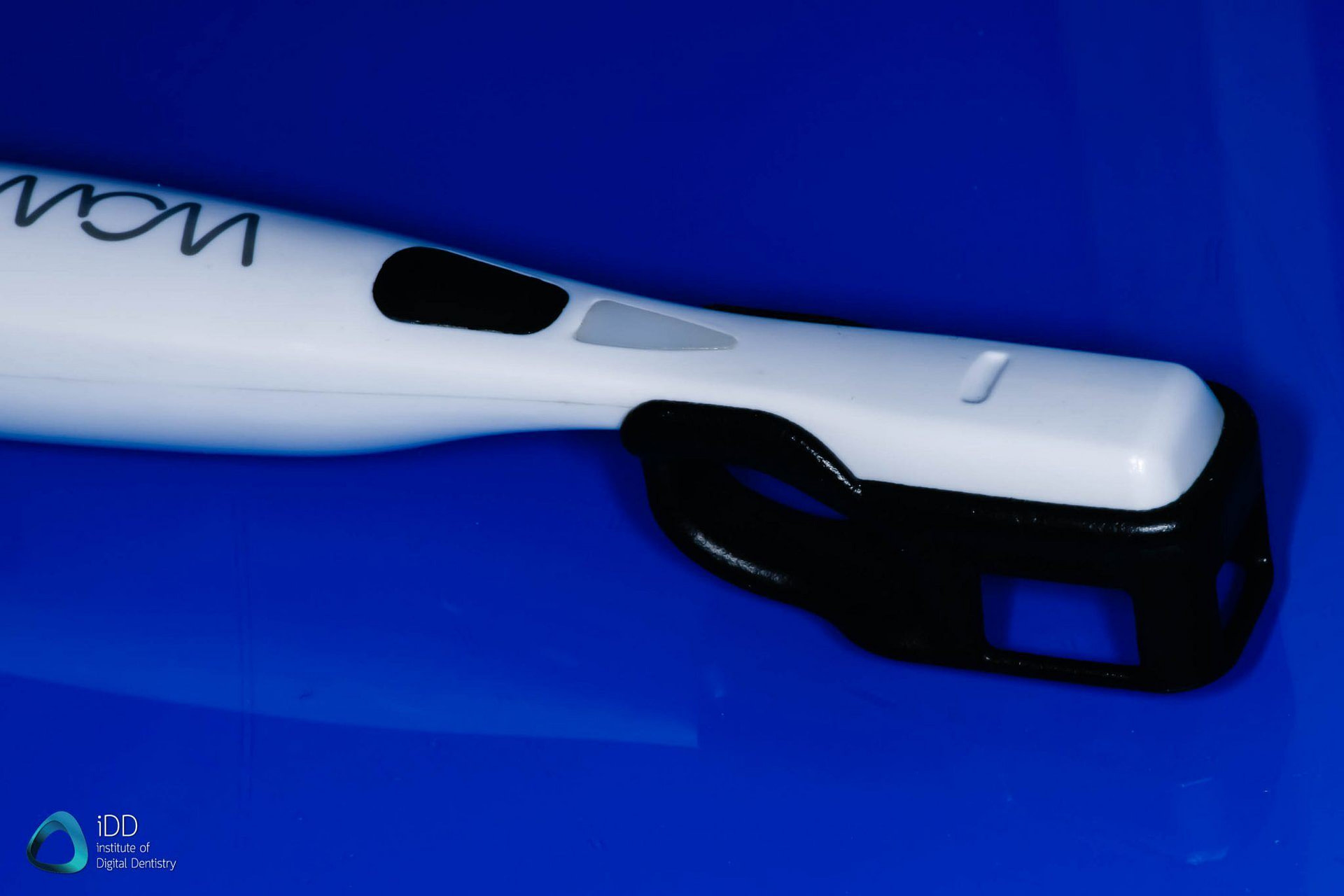
Clip on scanning guides shown on the WOW scanner. These are necessary for scanning.
High Performance Laptop Included
We were pleasantly surprised to find a laptop included with the WOW scanner. This is something that is not currently seen with any other intraoral scanner on the market and is a simple but great idea. We constantly get questions about optimum computer specifications for other scanners, so providing a purpose chosen laptop included with the scanner solves a lot of these issues.
The WOW scanner comes with a MSI GS65 computer which is an equally stylish and modern high performance laptop. It is 15.6-inches in size, ultra thin and easily portable. Its great to see the company behind WOW did not opt to include some cheap, heavy alternative. For those who want to know the specifications, here they are: GTX 1060 6G, i7-8750H 6 Core, 16GB RAM, 256GB SSD, full HD 144Hz high res screen, aluminium frame, black with gold diamond Cut, Linux OS.
The laptop works great and easily powers the WOW scanner. This concept of including a purpose chosen/built computer with a scanner is something more companies should definitely consider. Especially considering that the laptop included is not cheap (approx $2000) and the scanner is still one of the most affordable on the market.

MSI GS65 laptop computer included with WOW IOS
Scanning Speed
The WOW scanner is an interesting IOS to use - it is like nothing else on the market and has a completely different feel. The scanning protocol is quite different to all other scanners on the market. If you try to use it like you would use a TRIOS or CEREC, you will find it is quite slow to scan a full arch with. Once you follow the recommended scanning strategy, it becomes much better. Below is an example of the recommended scanning strategy when using the WOW scanner, compared to traditional scanning strategies. Much like all others it does not require any powders or scan sprays and produces a hyper-realistic colour image.


Traditional scanning strategy followed by the WOW Scanning strategy.
This difference in the scan execution may confuse users that are used to more traditional techniques. If you treat this scanner like all other IOS it will feel like a tedious and slow process.
A few hours of practice will likely be required to get used to the WOW scanner. Once your technique is established, you may find that it is not particularly fast but you can move at a much faster pace than you initially would expect and the software can generally keep up. It is not as fast as some of the latest generation scanners we have on the market like the CEREC Primescan and TRIOS 4, which may put some people off.
The main issue that really slows this scanner down, particularly for beginners, is the scanning flow. It is quite hard at first to keep a continuous scan across the arch due to a number of reasons – the very specific focal length, the occasional software lag and hiccups and more annoyingly, the fact the scanner doesn't pick up from the last point very quickly if it loses its position or is paused. When taking a quadrant scan, it took around 1 minute to complete each quadrant, and around 2-3 minutes for a full arch.
The WOW scanner also felt generally less forgiving of your positioning compared to all other IOS. As we described above, it needs to be held almost precisely a certain distance from the teeth for smooth scanning. Trying to do this without the guides is frustrating, as the scanner will constantly lose its place if you are slightly too close or too far away from the tooth surfaces.
Scanner Size & Ergonomic Design
In regards to scanner size and ergonomics there is simply no better scanner on the market than the WOW scanner. In an ideal world, every scanner would be as small and as lightweight as this. There is really no comparison in this aspect. The WOW scanner is about the size of a toothbrush and easily has the smallest scanner head on the market. It is smaller than the TRIOS scanners, Medit i500 and of course the CEREC Primescan or Itero. Ironically, the scanning guides can make it harder to scan in tighter areas regardless of the size of the scanner itself, as the guides themselves are a little bulky.
It is very lightweight at 110 grams, this makes it half the weight of most scanners and a quarter of the larger ones. The scanner only comes in one configuration and that is pen-grip or held like an intraoral camera. It is NOT wireless, and plugs in simply to the supplied laptop with a USB. It does not need its own power source.
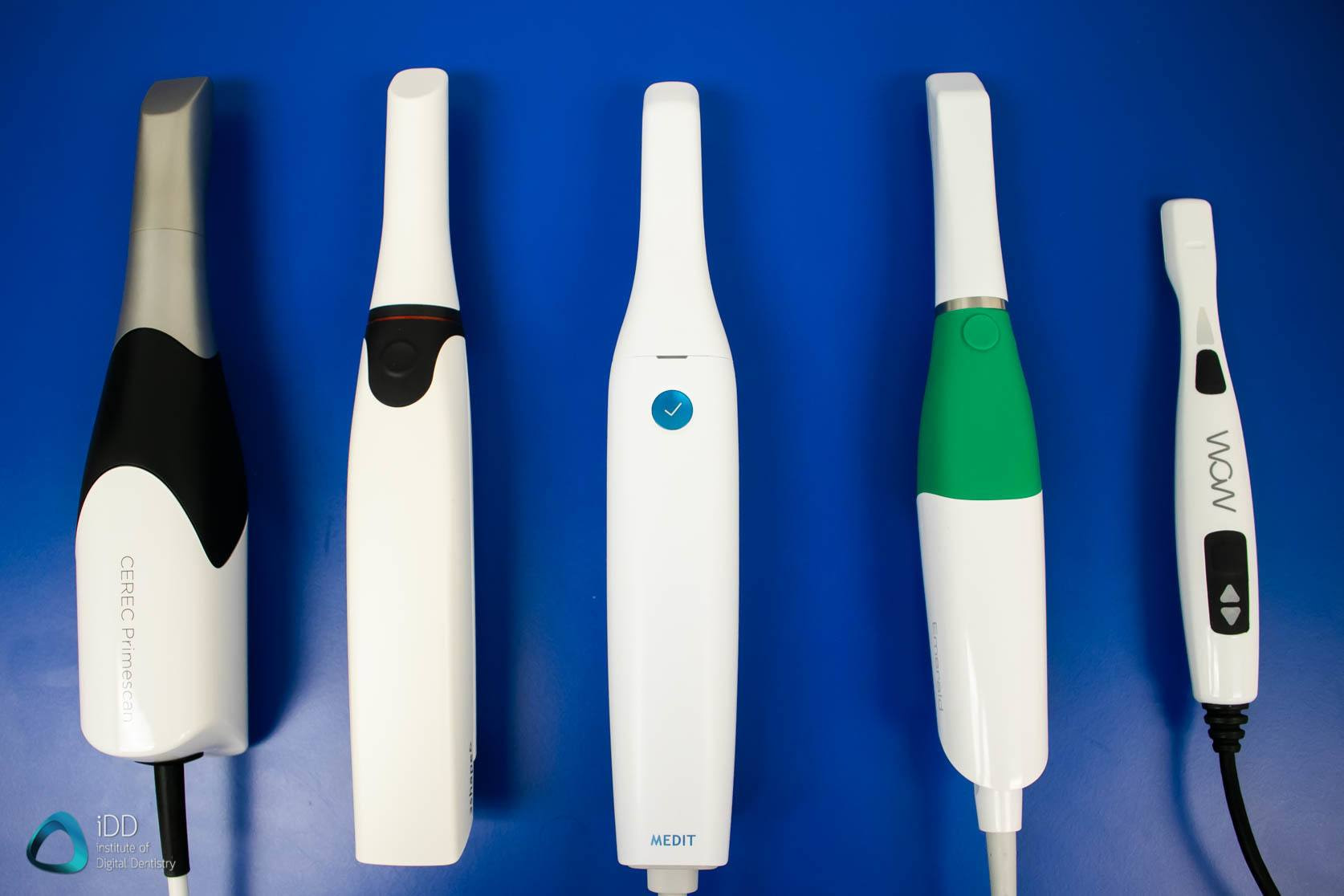
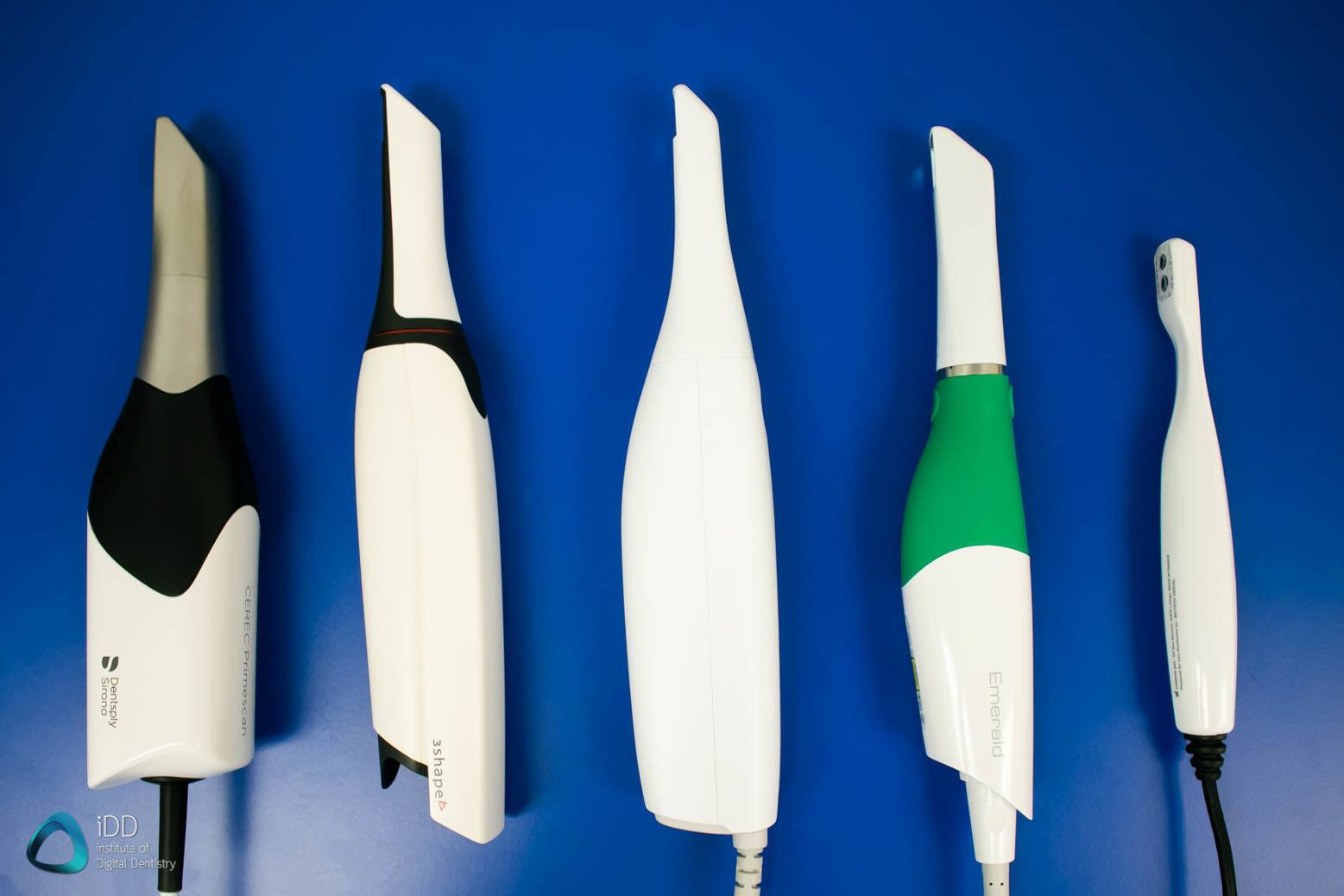
The WOW IOS is the smallest scanner on the market.
From left to right: CEREC Primescan, TRIOS 4, Medit i500, Planmeca Emerald and WOW
Considering it is an inexpensive IOS, it definitely doesn’t feel that way. Although mostly plastic, the scanner feels well built and is completely waterproof. It looks modern and thanks to its lightweight nature it is also very ergonomic, especially when compared to other 'cheap' scanners. The smaller scanner size is also generally comfortable for patients and makes intraoral maneuvering easier.
The WOW IOS has only one functional button to start and stop the scan, which is found on the top of the scanner. This button can also be used to progress through the workflow with long presses to continue to the next step. Above this button there is an LED light that gives you visual feedback about the scan - it will colour green when scanning and red when the scanner has lost its position. There is no 'on/off' button for the scanner and it simply powers on when connected to the computer. With the WOW scanner it does not need a designated power source like most other IOS, it simply works by connecting through a USB cable in the laptop. It is easy to start and get going.
There is an obvious downside of this small size and thats simply how much imaging tech can be packed into the body. In comparison, the much larger CEREC Primescan has a range of processors in the scanner itself to compute the images before it even reaches the computer. Whereas the WOW scanner does not have the luxury of space and thus the computing power has evidently been sacrificed as a result, resulting in the software sometimes struggling to keep up with the scanning pace. Additionally, due to its small size the WOW scanner has a very small scanning window. Therefore small variations in your position can easily make the scanner lose its place.
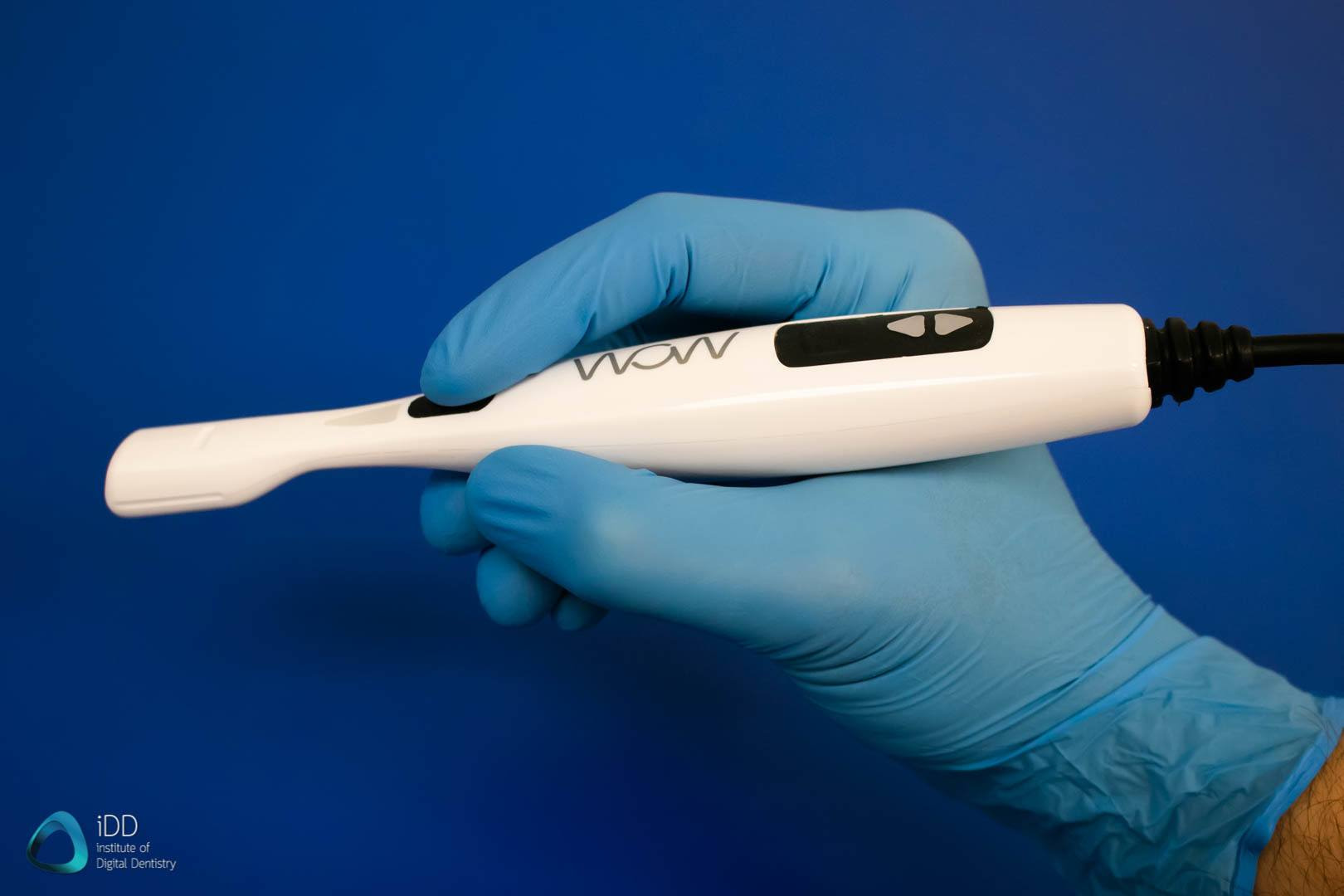
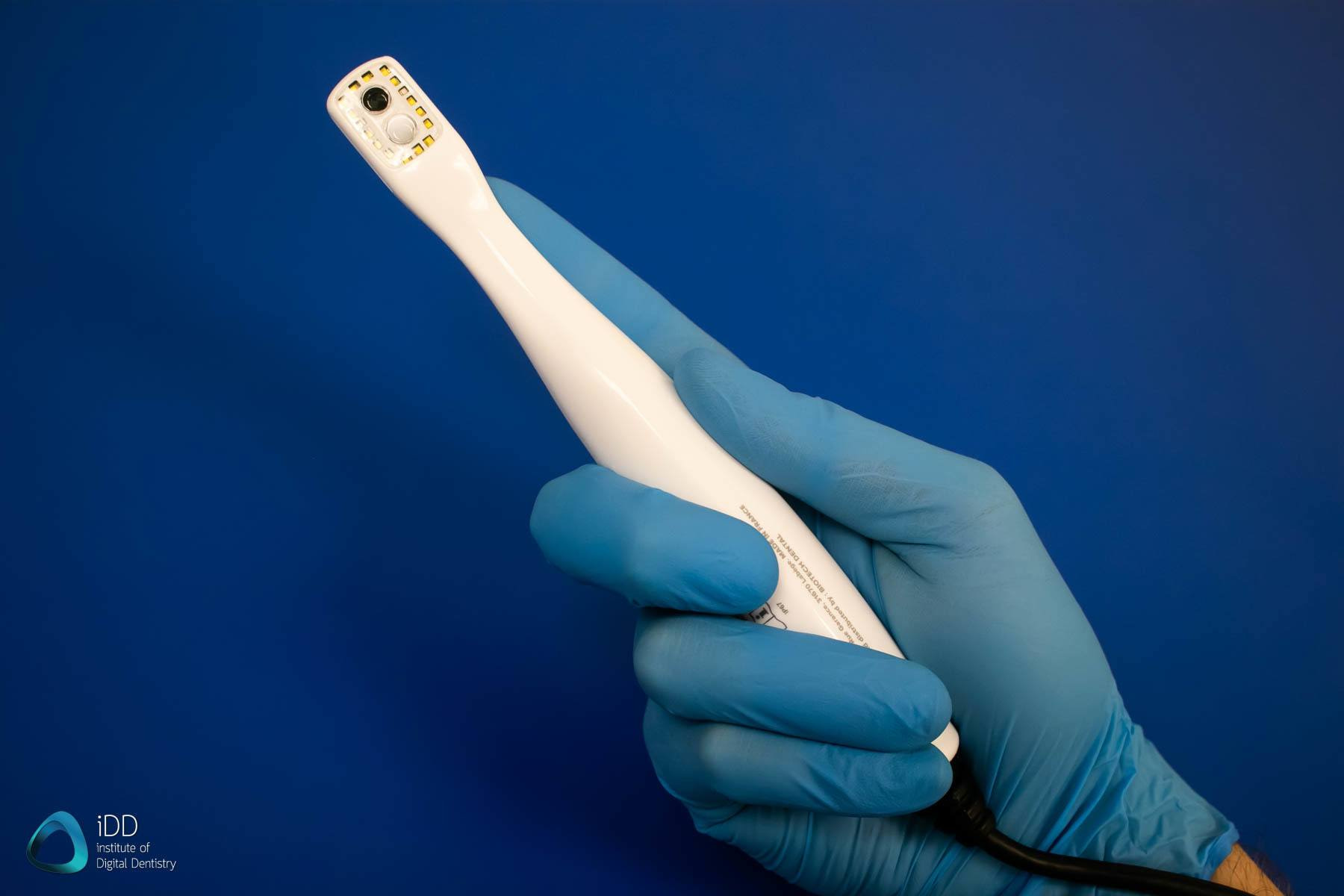
Artificial intelligence
The artificial intelligence (AI) in this scanner is functional but not excellent. The AI is responsible for stitching together the scan data and removes any artifacts. Overall it works well enough to stitch an image or arch scan together but fails to remove soft tissue interference like the tongue/cheeks in a predictable manner. The AI can also sometimes lose its place while scanning the arch and randomly jump to a different part of the scan, breaking the workflow.
It is said by Biotech Dental that the software incorporates deep learning. However, as it is new to the market it will take months for this to unveil the full potential that can be expected for this kind of AI driven technology. These claims cannot be confirmed nor denied at this stage, time will tell.
Overall, the main issue we found with the AI is that it does not quickly pick up when the scan has been stopped. Even with ample reference points, if the scanning flow is broken, or you lose your place, it will take some time to continue scanning again and this can make it quite frustrating to complete a scan.
Inbuilt Heater
The WOW scanner has an inbuilt heater in the scanner head. At first this is not obvious as the scanner head is so small, but it is warm to touch. Much like almost every scanner on the market now, this makes it easier to scan for long periods as the heater prevents fogging of the scanner tip while in the mouth. This is a useful addition for the scanner and is great to see here. The scanner also does not need any warm-up time and can be used soon after it is turned on which is useful.
Full Arch Scanning
The WOW scanner does an acceptable job in quadrant scanning and full arch scanning. The main issue here is that it requires a lot of practice. It is much harder to use than any other scanner because of the factors we have mentioned above. However once you get a hang of it, it isn't too bad.
We found we could achieve a full arch scan in around 1-2 minutes. This is not particularly fast in today's market of sub-45 second scanners. The scanner does have an inbuilt heater which helps a lot as it prevents the scanner fogging at all, especially in extended periods of use in the mouth. It is extremely small which helps with its use.
There is no external research on this scanner regarding full arch scanning accuracy, trueness or precision.
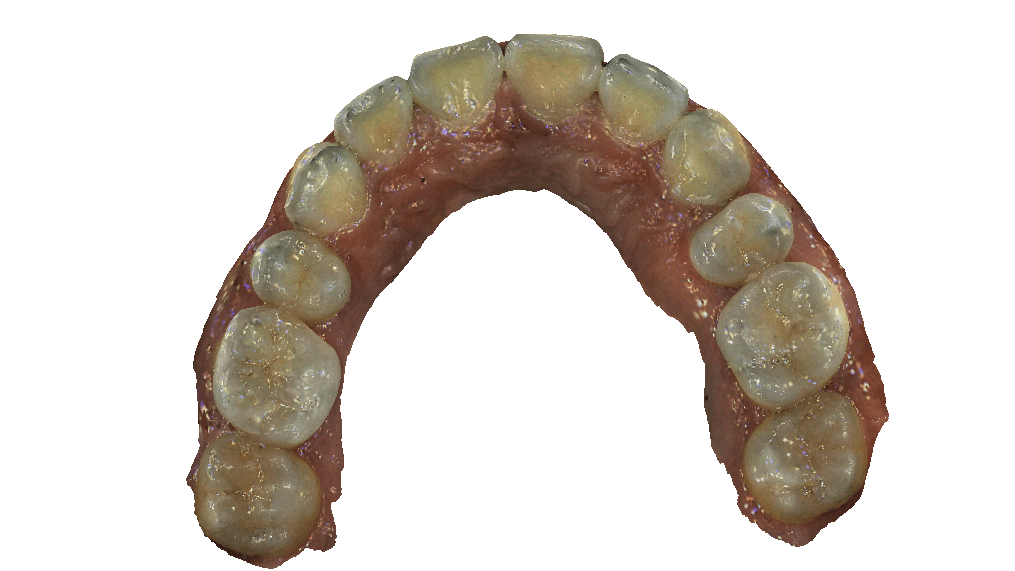
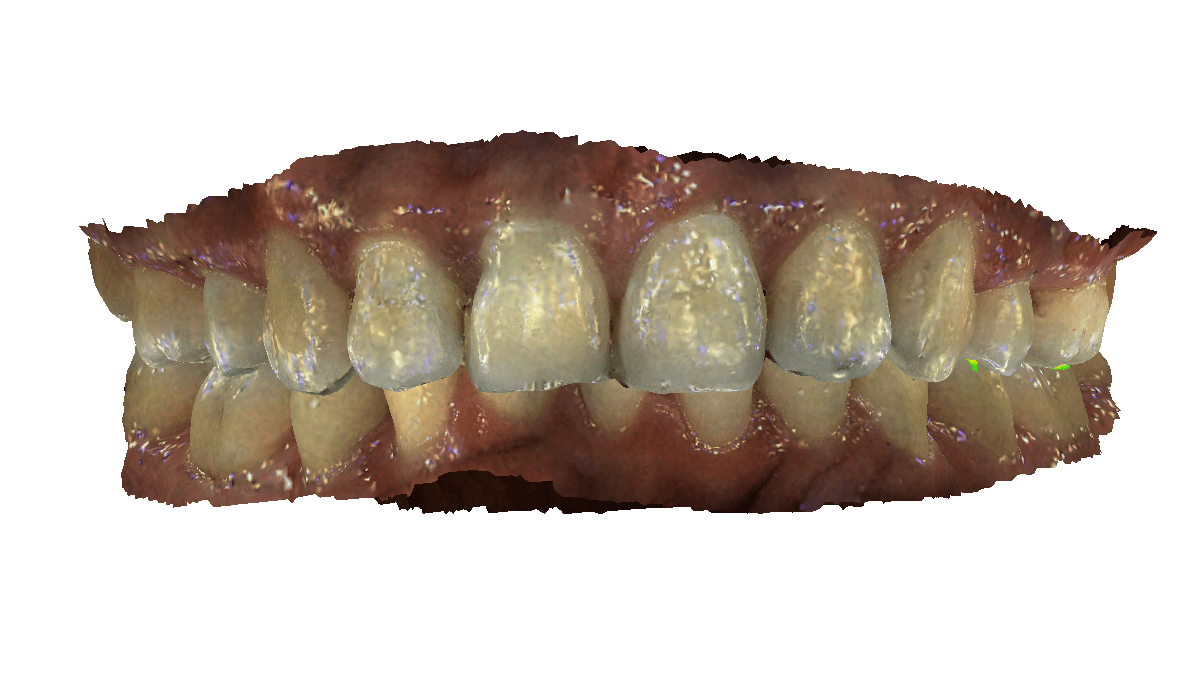

Realistic images produced by the WOW scanner
Ease of Use
This is the Achilles’ heel of this scanner which otherwise has a lot of potential. This is not an easy scanner to use. It is arguably the most difficult scanner on the market right now and requires a lot more practice than most scanners to achieve an acceptable scan. When you do get the hang of it, it is actually quite satisfying.
There are some elements the WOW scanner does very well. Namely the software. The software that runs the WOW scanner is modern and stylish. The workflow is intuitive, the menus are clear and slick, and it follows a simple step by step progression identical across most scanners on the market. It is overall a pleasant software to use and navigate and exporting scans is very easy and simply saved locally.
This typical workflow is as follows: filling out the patient details and lab form, scanning the preparation, scanning the opposing teeth and finally, scanning the bite and compute occlusion manually or automatically. Viewing scans and minor edits of the scans can be carried out, but overall the scan editing tools are limited. You can also marginate preps via an automatic margin tool or a brush tool.
The software, once again, does not design any prosthetics nor has any design aspects. It is just a scanner and has no CAD design software. There is integration however with Biotech and other companies such as Smilers for Aligners.
For those looking to carry out the entire workflow in-house, you will need to invest in a 3rd party CAD software like exocad and 3rd party milling machine.
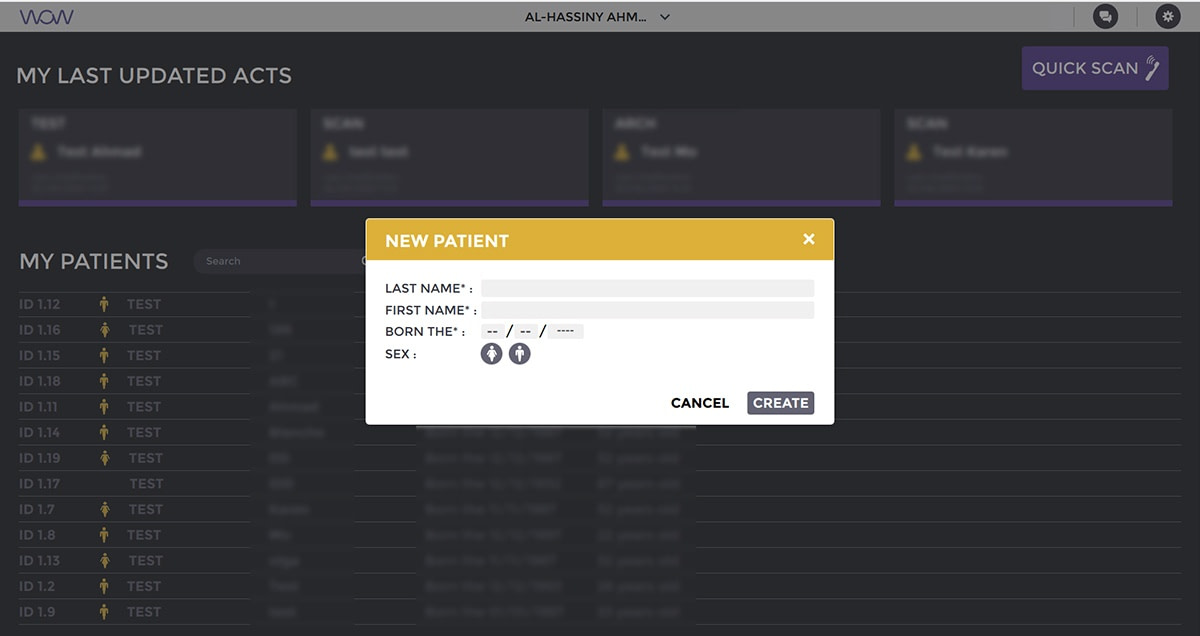
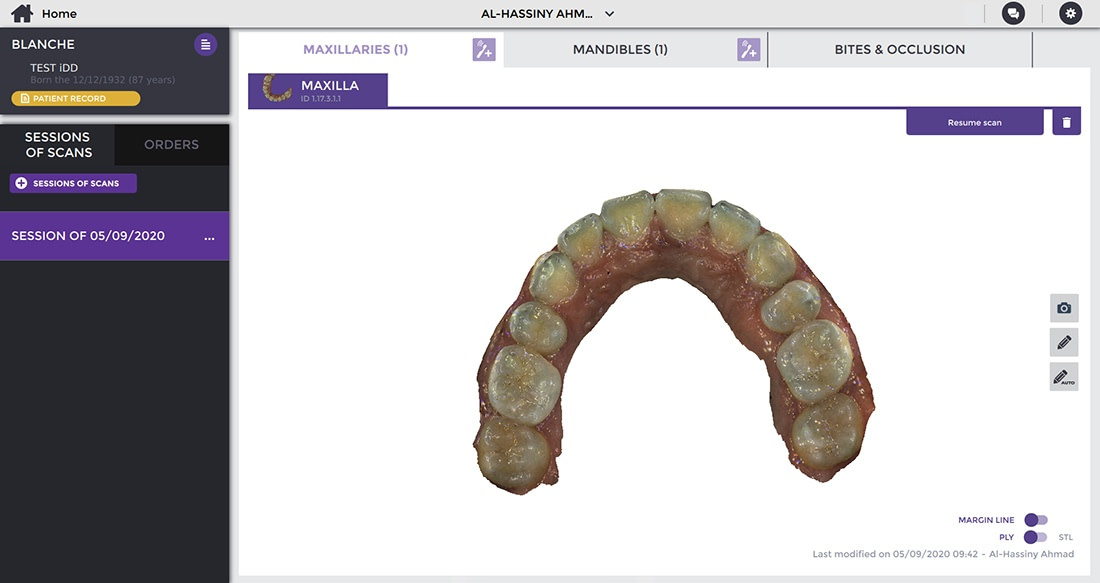
The software does well guiding you through the steps of scanning
Edentulous scanning
The WOW scanner is not indicated for completely edentulous scans. We have been advised by the manufacturer that at this stage it is too difficult to carry this out using WOW. We tried and also found that it could not properly stitch images when used in completely edentulous patients.
Therefore we can conclude that the WOW scanner is limited to dentate patients and small gaps in the arch. It seems to be able to be used for short edentulous spaces such as those between teeth, so has potential for use in implant cases for dentate patients. Some scan bodies cannot be scanned using WOW due to the limited focal length and the material that the scan body is made from. It works fine with biotech dental implants and other brands such as Straumann or Nobel Biocare.
Open or Closed Architecture
The WOW scanner is a scanner only, with no CAD software or integrated milling unit. Fortunately, the system is completely open allowing the export of monochromatic STL files or colour PLY files into any CAD/CAM system of your choice, although one might assume they would prefer you to use one of their manufacturing services instead.
You will primarily use STL as this is the most widely accepted scanning format across many labs and design softwares. One key distinction to make is that the STL file is NOT a colour file. Although the scanner scans in colour, when exporting in STL and opening in a design software you will be designing on a monochrome model. It is great to see the PLY option here.
You can download the file on your computer or use the dedicated “discussion” tool, to send orders to any contact you wish to create. That contact will be able to receive your orders via their online free wow-scan web account. From this account, the receiver will also be able to export to other direct format, such as exocad’s file format.
This workflow is completely secure end to end. All WoW files are saved locally and backed up on a server that auto manages RGPD compliance, data replication, consistency, high security and archiving. This is at no extra cost to the user.
Cost
This is likely a big selling point for the scanner as it is one of the most affordable intraoral scanners on the market with a price tag of $18,500 USD or 17,000€. This indicates that the WOW scanner intends to compete at the cheaper end of the current IOS market. Also, keep in mind this scanner comes with a high performance MSI GS65 laptop included, priced at around $2000 USD at the time of writing this review, which other scanners do not come with.
When comparing to the other popular scanners on the market, they tend to range from $18,000 - $70,000 USD depending on the type of scanner you purchase (premium vs affordable) and the generation of scanner. So the WOW scanner is very competitively priced. There are also no ongoing costs when using the WOW scanner. It does not have removable and autoclavable scanning heads.
On the topic of the lack of autoclavable scanning heads, the WOW scanner is disinfected completely by cold sterilisation. Because it is completely sealed it can be submerged and cleaned thoroughly without worrying about damaging the scanner. See the attached “Disinfection Protocol” provided by the WOW team.
Yearly Fees / Subscription
The WOW scanner has no yearly fees, subscriptions or license fees. The scanner is true a one-off purchase and the company provides updates for the software in order to optimize it. All software updates are completely free of charge. No subscription fees are becoming more and more common across the IOS scanner market and its it is great to see this is the case. The only ongoing costs will likely be the scanning guides that are essential for using the WOW IOS. These guides can be autoclaved up to 60 times and cost €15.
WOW Software
The WOW software is the brain of the system. It works well and is easy to use. It is responsive and follows a clear workflow from administration through to scan. The software is used to input patient details, take the scans, process the scans and finally export the files.
Overall we thought the software worked well for what it needed to do. However there are some areas that were annoying. For instance, after completing the scan the software moves to a 'reconstruction' page, in other words post-processing. For a full arch this can easily take around 1 minute and you are forced to wait before you can proceed with the next scan. This introduces a a lot unnecessary time in which you are simply waiting for the software to finish loading before you can continue with the opposing scan.
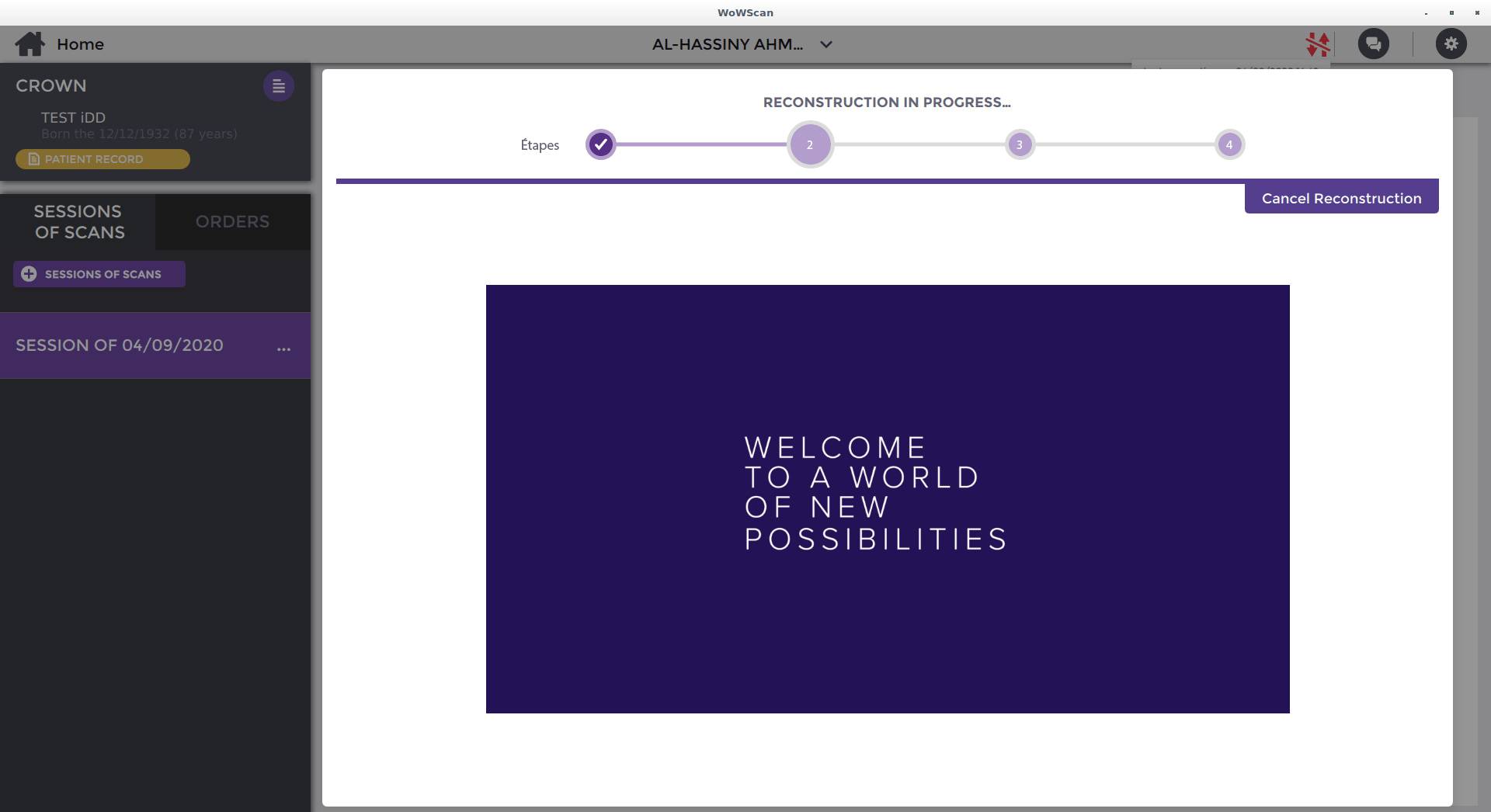
The post processing 'reconstruction' screen that occurs after each scan. This slows down the overall workflow.
Secondly, the scan clean up tools are very limited and you cannot do a lot more than check occlusion and delineate margins once the scan is complete. There are a lot less tools than what we see in the likes of the Medit i500 for example which allows you to modify the scans quite significantly.
It does the job and has a good user interface. It enables easy exporting of PLY or STL files straight onto the laptop, but does not provide any more than that. The software user interface looks great.
The WOW team are working hard to improve the scanner and update the software with new features, which are all free of charge. Recently (as of 22.9.20), the WOW team have released a beta patch that includes a number of new features such as adding bases to your scans for easy printing, improving margin line tracing and general improvements to the workflow.
Review Summary
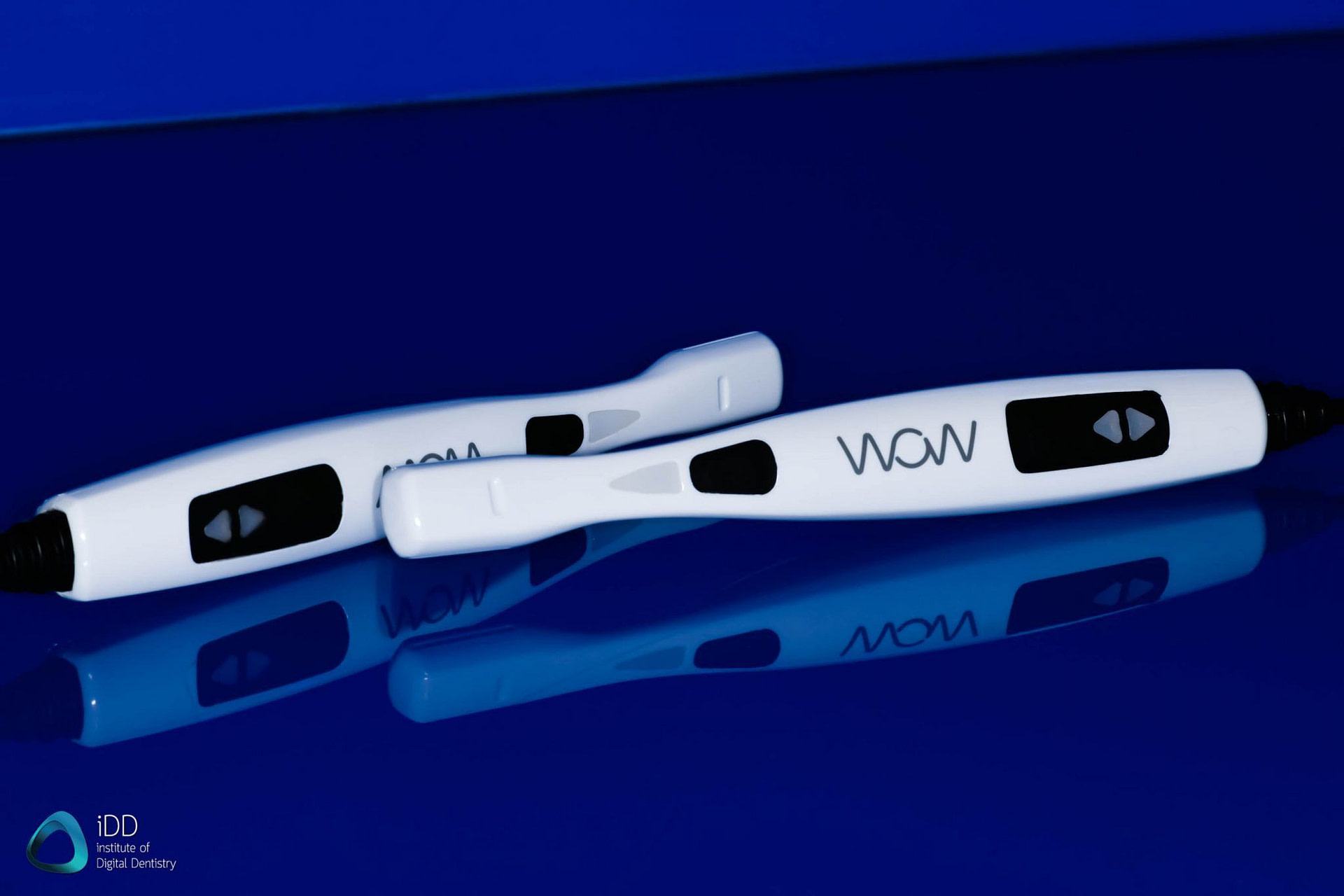
To summarize our in-depth look at the WOW IOS, we have focused on comparing the clinical aspects rather than technical specifications. Overall the WOW is a unique and interesting scanner that is completely different to all other IOS on the market. It is very competitively priced, especially given the inclusion of the high performance laptop.
We identified some downsides with the scanner related to it's use, and these mainly revolve around the fact that it is basically an intraoral video camera that creates 3D images rather than a traditional 3D scanner like all other IOS. This meant there was a steep learning curve and it is much harder to use than any other scanner on the market. Once we got the hang of it, it became a lot easier but this took time.
Once you learn how to use the scanner, it is very satisfying. Not the fastest scanner on the market but it can be used to achieve full arch scans within 1-2 minutes. It does struggle in some ways given the very precise focal length and that does mean scanning interproximal areas and some scan bodies are difficult to scan.
We can see the clear merits of the WOW scanner especially in terms of size and ergonomics. As a stand-alone scanner this would need careful consideration given the very difficult learning curve. For those who are looking to carry out CAD/CAM in-house this scanner is not likely to be your first choice.
The price point of the WOW scanner is also quite attractive at $18,500 USD, including the $2000 laptop. This makes it one of the cheapest scanners on the market alongside the likes of Medit i500 and the Shining 3D Aoralscan.
It is quite incredible how the price point for CAD/CAM scanners has dropped over the years, and this is beneficial for all dental professionals worldwide as it will enable greater uptake for those worried about the initial investment cost. For those of you looking at getting into intraoral scanning, the WOW IOS is definitely an option that should at least be explored.

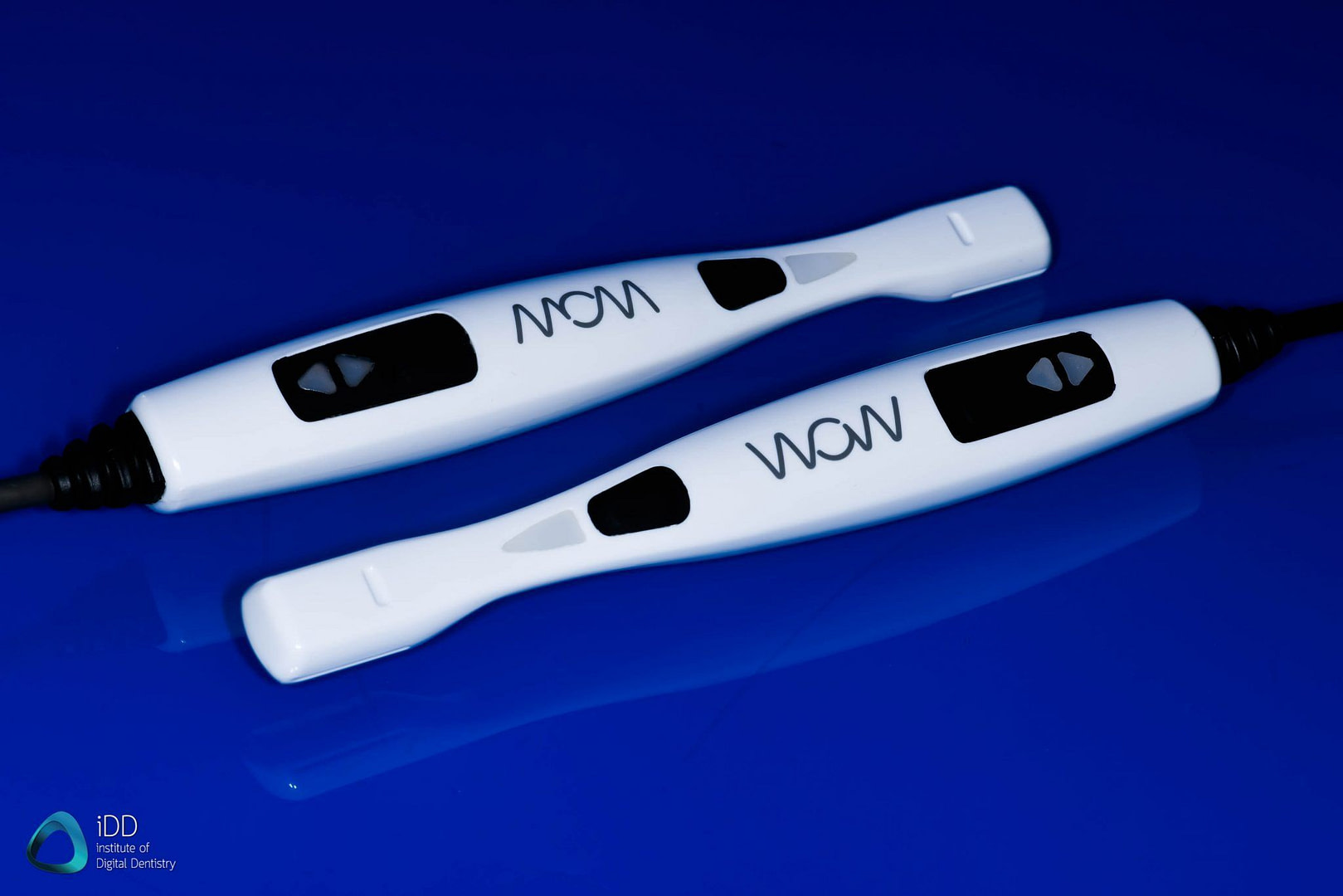
Amazing review. What are the exact dimensions of the scanner?
Hey there, thanks! I do not have the exact dimensions as I wrote this review a long time ago. I even think the scanner has been discontinued…